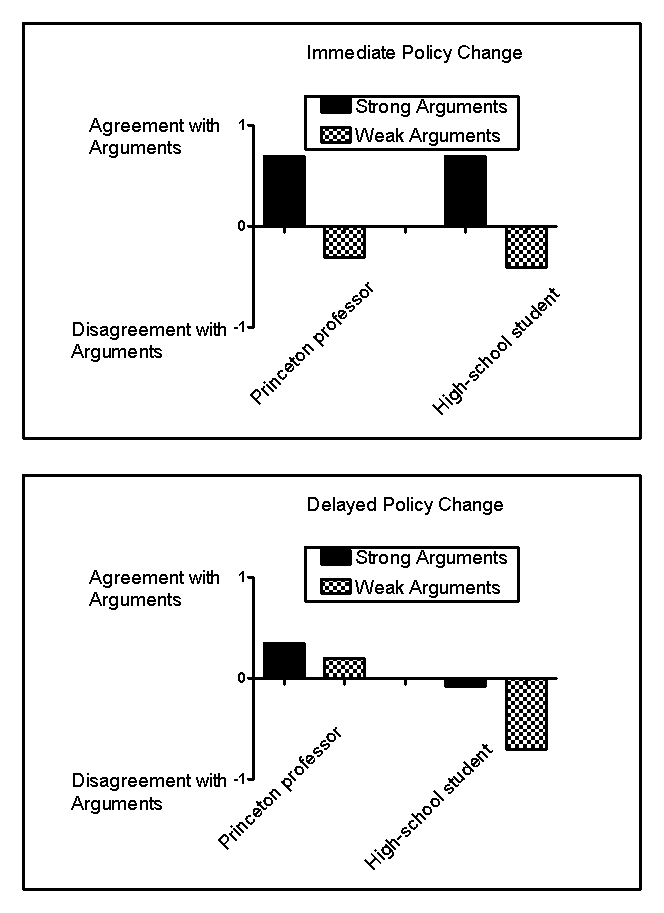Use the following to answer questions
Scenario II
The following scenario contains fabricated results consistent with the following study:
Petty,R.E. ,Cacioppo,J.T. ,& Goldman,R.(1981) .Personal involvement as a determinant of argument-based persuasion.Journal of Personality and Social Psychology,41,847-855.
Every day,consumers are exposed to scientifically based sales,marketing,and public relations strategies designed to influence purchasing decisions,change opinions,or win votes.One common sales strategy is the foot-in-the-door technique,a method that involves first making a smaller request that consumers are likely to grant and then following it with a larger request.Another common strategy is the door-in-the-face technique,which involves making an unreasonably large request that consumers will reject and then following it with a smaller request.When persuasion is necessary,it usually takes one of two forms: heuristic persuasion,which involves an appeal to habits or emotion,and systematic persuasion,which involves an appeal to facts and reason.Often,people will rely more on heuristics-simple shortcuts or "rules of thumb"-to make decisions instead of systematically weighing the evidence.
Petty and colleagues (1981) investigated some of these techniques in college students listening to arguments in favor of their college requiring an institution-level comprehensive final examination for graduation.Some students were led to believe that,if adopted,this policy would take place right away,and some were led to believe that the change would take place in a decade.In addition,some of the students were led to believe that they were listening to an argument from a Princeton professor,and others were led to believe that they were listening to an argument from a high-school student.Finally,some students heard strong arguments in favor of the policy,and some heard weak arguments.Thus,the experiment arranged six groups of students.For example,one group of students heard strong arguments from a high-school student about a far-removed policy change.Figure 13.1 shows fabricated results illustrating the major findings of this experiment.
Figure 13.1 
-(Scenario II) The results shown in Figure 13.1 suggest that college students were systematically persuaded when the:
Definitions:
Role
The function or part played by a person or thing in a particular situation or context.
Peripheral Route Persuasion
A method of persuasion that relies on superficial cues or factors, such as attractiveness or celebrity endorsement, rather than logical argumentation.
Cognitive Dissonance
A psychological phenomenon occurring when an individual experiences discomfort from holding two or more conflicting beliefs, ideas, or values.
Central Route Persuasion
A method of persuasion that involves deeply processing the content of a message, considering the arguments and evidence in detail.
Q1: (Scenario I). The three stages of GAS
Q11: What are four characteristics of stereotypes that
Q12: (Scenario II) A war veteran receiving systematic
Q12: Compared to participants who received relaxation and
Q44: Threats, but not challenges, increase the constriction
Q50: Larger groups provide more opportunity for deindividuation
Q85: Hardiness training has been shown to reduce
Q99: Evaluating other people positively or negatively based
Q159: Although Alexander is careful to treat all
Q188: Who was the originator of the Thematic